This set of Basic Electrical Engineering Multiple Choice Questions & Answers (MCQs) focuses on “Parallel Networks”.
1. If two bulbs are connected in parallel and one bulb blows out, what happens to the other bulb?
a) The other bulb blows out as well
b) The other bulb continues to glow with the same brightness
c) The other bulb glows with increased brightness
d) The other bulb stops glowing
View Answer
Explanation: If one bulb blows out, it acts as an open circuit. Current does not flow in that branch but it continues to flow in the other branch of the parallel circuit. Hence the other bulb continues to glow. Also the voltage across other bulb remains the same due to which power delivered to it remains the same so it continues to glow with the same brightness.
2. Calculate the current across the 20 ohm resistor.
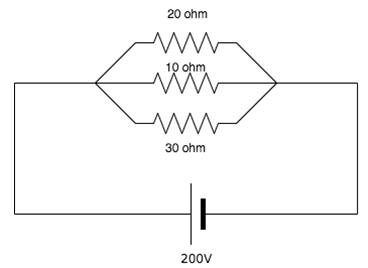
a) 10A
b) 20A
c) 6.67A
d) 36.67A
View Answer
Explanation: I=V/R. Since in parallel circuit, voltage is same across all resistors. Hence across the 20 ohm resistor, V=200V so I=200/20=10A.
3. In a parallel circuit, with a number of resistors, the voltage across each resistor is ________
a) The same for all resistors
b) Is divided equally among all resistors
c) Is divided proportionally across all resistors
d) Is zero for all resistors
View Answer
Explanation: In parallel circuits, the current across the circuits vary whereas the voltage remains the same.
4. The current in each branch of a parallel circuit is proportional to _________
a) The amount of time the circuit is on for
b) Proportional to the value of the resistors
c) Equal in all branches
d) Proportional to the power in the circuit
View Answer
Explanation: I=V/R. In a parallel circuit, the voltage across each resistor is equal, hence the value of the current is proportional (inversely) to the value of the resistance.
5. Calculate the total current in the circuit.
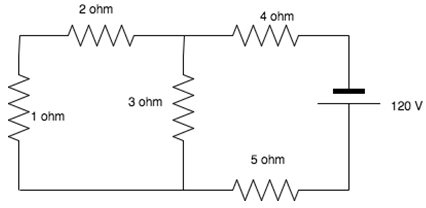
a) 20 A
b) 10 A
c) 11.43 A
d) 15 A
View Answer
Explanation: The 1 ohm and 2 ohm resistor are in series which is in parallel to the 3 ohm resistor. The equivalent of these resistances (3/2 ohm) is in series with the 4 ohm and 5 ohm resistor. Total R = 21/2 ohm. I=V/R=120/(21/2)=240/21=11.43 A.
6. The voltage across the open circuit is?
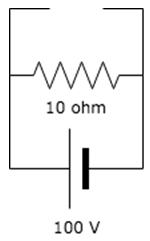
a) 100V
b) Infinity
c) 90V
d) 0V
View Answer
Explanation: The voltage across all branches in a parallel circuit is the same as that of the source voltage. Hence the voltage across the 10 ohm resistor and the open circuit is the same=100V.
7. The voltage across the short is?
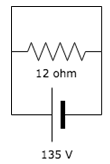
a) 135V
b) Infinity
c) Zero
d) 11.25V
View Answer
Explanation: The voltage across a short is always equal to zero whether it is connected in series or parallel.
8. If the current through x ohm resistance in the circuit is 5A, find the value of x.
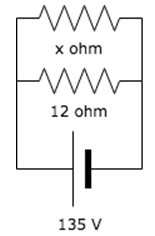
a) 27 ohm
b) 5 ohm
c) 12 ohm
d) 135 ohm
View Answer
Explanation: R=V/I. In this circuit I=5A and V=135V. Therefore, R=135/5=27 ohm.
9. The currents in the three branches of a parallel circuit are 3A, 4A and 5A. What is the current leaving it?
a) 0A
b) Insufficient data provided
c) The largest one among the three values
d) 12A
View Answer
Explanation: The total current leaving a node is the same as the current that enters it. Total I=I1+I2+I3=3+4+5=12A.
10. The total resistance between A and B are?
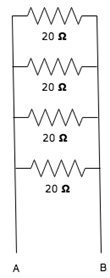
a) 20 ohm
b) 5 ohm
c) 80 ohm
d) 0 ohm
View Answer
Explanation: The resistors are connected in parallel, hence the equivalent resistance = 1/(1/20+1/20+1/20+1/20)=5A.
Sanfoundry Global Education & Learning Series – Basic Electrical Engineering.
To practice all areas of Basic Electrical Engineering, here is complete set of 1000+ Multiple Choice Questions and Answers.
If you find a mistake in question / option / answer, kindly take a screenshot and email to [email protected]
